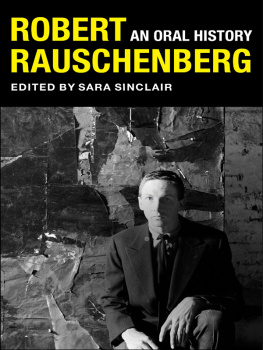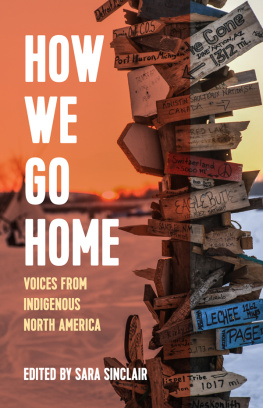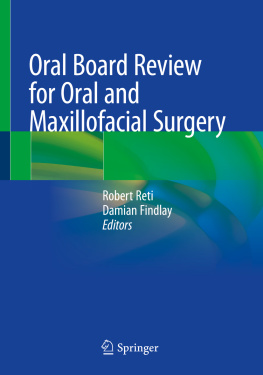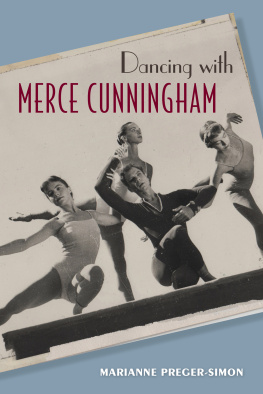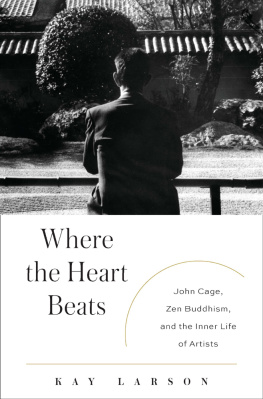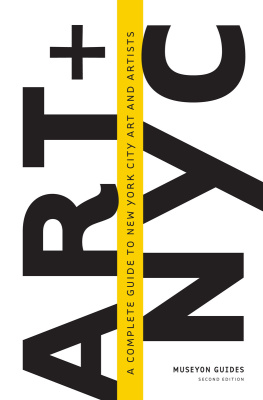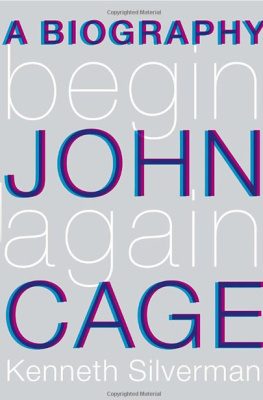Sara Sinclair - Robert Rauschenberg: An Oral History
Here you can read online Sara Sinclair - Robert Rauschenberg: An Oral History full text of the book (entire story) in english for free. Download pdf and epub, get meaning, cover and reviews about this ebook. year: 2019, publisher: Columbia University Press, genre: Religion. Description of the work, (preface) as well as reviews are available. Best literature library LitArk.com created for fans of good reading and offers a wide selection of genres:
Romance novel
Science fiction
Adventure
Detective
Science
History
Home and family
Prose
Art
Politics
Computer
Non-fiction
Religion
Business
Children
Humor
Choose a favorite category and find really read worthwhile books. Enjoy immersion in the world of imagination, feel the emotions of the characters or learn something new for yourself, make an fascinating discovery.
- Book:Robert Rauschenberg: An Oral History
- Author:
- Publisher:Columbia University Press
- Genre:
- Year:2019
- Rating:5 / 5
- Favourites:Add to favourites
- Your mark:
Robert Rauschenberg: An Oral History: summary, description and annotation
We offer to read an annotation, description, summary or preface (depends on what the author of the book "Robert Rauschenberg: An Oral History" wrote himself). If you haven't found the necessary information about the book — write in the comments, we will try to find it.
Robert Rauschenberg (19252008) was a breaker of boundaries and a consummate collaborator. He used silk-screen prints to reflect on American promise and failure, melded sculpture and painting in works called combines, and collaborated with engineers and scientists to challenge our thinking about art. Through collaborations with John Cage, Merce Cunningham, and others, Rauschenberg bridged the music, dance, and visual-art worlds, inventing a new art for the last half of the twentieth century.
Robert Rauschenberg is a work of collaborative oral biography that tells the story of one of the twentieth centurys great artists through a series of interviews with key figures in his lifefamily, friends, former lovers, professional associates, studio assistants, and collaborators. The oral historian Sara Sinclair artfully puts the narrators reminiscences in conversation, with a focus on the relationship between Rauschenbergs intense social life and his art. The book opens with a prologue by Rauschenbergs sister and then shifts to New York Citys 1950s and 60s art scene, populated by the luminaries of abstract expressionism. It follows Rauschenbergs eventual move to Floridas Captiva Island and his trips across the globe, illuminating his inner life and its effect on his and others art.
The narrators share their views on Rauschenbergs work, explore the curatorial thinking behind exhibitions of his art, and reflect on the impact of the influx of money into the contemporary art market. Included are artists famous in their own right, such as Laurie Anderson and Brice Marden, as well as art-world insiders and lesser-known figures who were part of Rauschenbergs inner circle. Beyond considering Rauschenberg as an artist, this book reveals him as a man embedded in a series of art worlds over the course of a long and rich life, demonstrating the complex interaction of business and personal, public and private in the creation of great art.
Sara Sinclair: author's other books
Who wrote Robert Rauschenberg: An Oral History? Find out the surname, the name of the author of the book and a list of all author's works by series.

